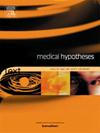Reducing hyperphosphatemia in dialysis patients with renal-specific oral nutritional supplements
IF 2.1
4区 医学
Q3 MEDICINE, RESEARCH & EXPERIMENTAL
引用次数: 0
Abstract
Hyperphosphatemia is a common issue in dialysis patients and a significant risk factor for mineral bone disorders, cardiovascular complications, and mortality. Various therapeutic modalities are available for managing high serum phosphorus, though their effectiveness remains limited. A combination of adequate dialysis, dietary restrictions on phosphorus intake, and phosphate binder therapy are routinely employed in the treatment. However, patient adherence to dietary recommendations and phosphate-binder therapy is often unsatisfactory. This paper proposes replacing phosphorus-rich meals with renal-specific oral nutritional supplements (RS-ONS). Specifically, RS-ONS with low phosphorus content should be used, which allows its use without the need for phosphate binders and with minimal fluid contribution. This approach could lower serum phosphorus levels, decrease the phosphate-binders pill burden, and improve patient compliance and quality of life.
求助全文
约1分钟内获得全文
求助全文
来源期刊

Medical hypotheses
医学-医学:研究与实验
CiteScore
10.60
自引率
2.10%
发文量
167
审稿时长
60 days
期刊介绍:
Medical Hypotheses is a forum for ideas in medicine and related biomedical sciences. It will publish interesting and important theoretical papers that foster the diversity and debate upon which the scientific process thrives. The Aims and Scope of Medical Hypotheses are no different now from what was proposed by the founder of the journal, the late Dr David Horrobin. In his introduction to the first issue of the Journal, he asks ''what sorts of papers will be published in Medical Hypotheses? and goes on to answer ''Medical Hypotheses will publish papers which describe theories, ideas which have a great deal of observational support and some hypotheses where experimental support is yet fragmentary''. (Horrobin DF, 1975 Ideas in Biomedical Science: Reasons for the foundation of Medical Hypotheses. Medical Hypotheses Volume 1, Issue 1, January-February 1975, Pages 1-2.). Medical Hypotheses was therefore launched, and still exists today, to give novel, radical new ideas and speculations in medicine open-minded consideration, opening the field to radical hypotheses which would be rejected by most conventional journals. Papers in Medical Hypotheses take a standard scientific form in terms of style, structure and referencing. The journal therefore constitutes a bridge between cutting-edge theory and the mainstream of medical and scientific communication, which ideas must eventually enter if they are to be critiqued and tested against observations.
 求助内容:
求助内容: 应助结果提醒方式:
应助结果提醒方式:


